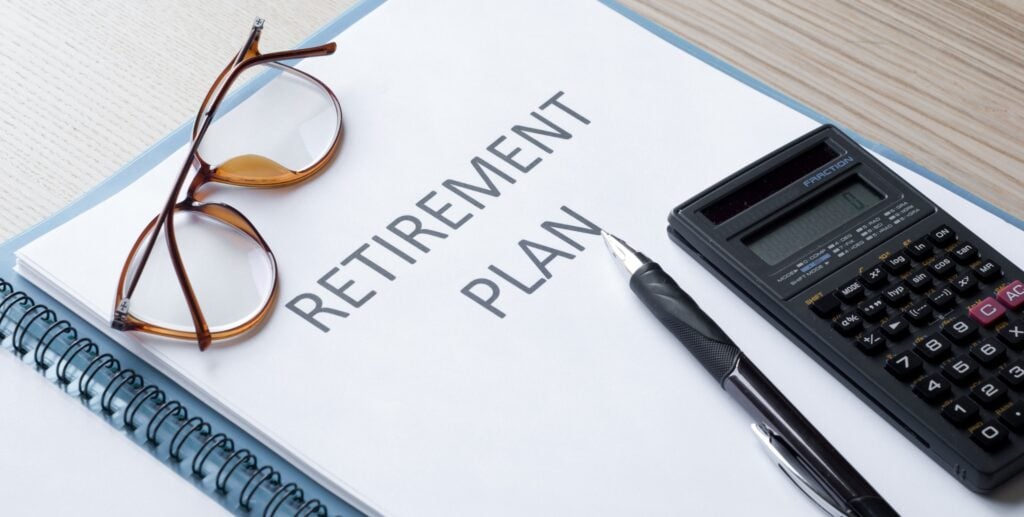Remember the days when workers retired at 62 with a pension and lived comfortably for the rest of their days?
Actually, I don’t remember those days. But plenty of workers still believe in outdated retirement myths that just don’t hold true anymore.
Rethink your retirement, or face a rude awakening when the sun sets on your career. Here’s a look at some of this advice that doesn’t work anymore.
“Retirement Is the Finish Line”
In the 20th century, people worked until that final Friday, when the office threw a retirement party and handed you an engraved watch. If you were lucky. Then you went home and sat on the couch or played golf until you croaked.
Today, workers approach retirement with a little more nuance. They think in terms of semiretirement gigs: fun, flexible work they can do on their own terms that brings in some extra cash. Cash that helps them postpone taking Social Security, and avoid selling stocks when the market drops.
Better yet, think of financial independence as the FI-nish line. How much passive income do you need to cover your living expenses? Create it—then go do work you love.
In fact, you don’t even need to do that. Reach “coast FI,” where you have enough invested that it will compound on its own to reach your target nest egg. From there, you can switch careers to something you love, without having to budget money for retirement investments.
“Follow the 80% Spending Rule”
For decades, financial planners told clients that they won’t spend as much in retirement, so they only need enough income to cover 80% of their current spending.
Sure, some costs like commuting or mortgage payments may decline, but others rise. Healthcare, travel, home maintenance, and family support (like helping adult children or aging parents) can eat into your budget. My own mother spends significantly more now that she’s retired than she did when she was working.
“Many people underestimate how expensive their 60s and 70s can be,” points out Oren Sofrin of Eagle Cash Buyers in a conversation with BiggerPockets. “They’re more active, plus medical inflation outpaces general inflation.”
“Social Security Will Cover 40%-50% of My Expenses”
Just this year, the Social Security Administration recalculated when its OASI trust fund will become insolvent. Bad news: It moved the date up to 2032.
That means Social Security reforms are coming, and you can expect lower benefits and higher taxes.
And as just touched upon, many people spend more in retirement, not less. “The mindset of relying heavily on Social Security also misses the mark because older adults are more active and spending more than they used to,” notes real estate investing coach Tim Bowman when talking to BiggerPockets. “They want to pursue hobbies and travel, all of which costs money.”
“I Should Target a 60/40 Allocation”
As a real estate investor, you intuitively get that the 60% stocks, 40% bonds allocation is bunk. Where does real estate fit into that, after all?
But real estate aside, the 60/40 portfolio is still outdated.
In his will, Warren Buffett instructed his trustee to put 90% of his investments in an S&P 500 index fund and the other 10% in short-term government bonds. Professor Javier Estrada at the IESE Business School in Barcelona, Spain, put that 90/10 allocation to the test with historical data and found it dramatically outperformed a 60/40 portfolio and had an extremely low failure rate (2.3%).
Attorney Julia Rueschemeyer sums up the study in a conversation with BiggerPockets: “Even during the stock market’s worst down periods, such a 90/10 portfolio was only slightly lower than a 60/40 portfolio. And in good times, the 90/10 portfolio creates a huge amount of wealth for retirees.”
“Follow the Rule of 100”
The “Rule of 100” is even worse than the 60/40 portfolio myth. It states that you should subtract your age from 100, and that percentage of your portfolio should go in stocks, with the rest in bonds.
Maybe that math worked when Treasury bonds paid 16% interest. It doesn’t work when they pay 2% to 4%.
Personally, I have almost no money at all in bonds. My portfolio replaces bonds with passive real estate investments. Every month, I invest $5,000 in a new passive real estate investment, as a member of the co-investing club that I help organize. We all meet in a Zoom meeting, vet an investment together, and any members who want to invest can do so with $5,000 or more.
Oh, and the investment we vetted this month? It actually does pay 16% in distributions—and has done so since inception.
“Follow the 4% Rule”
As generic, sweeping, unnuanced rules of thumb go, the 4% Rule is actually better than most. But it still doesn’t hold up for thoughtful, sophisticated investors like you and me.
In an interview with the ever-savvy Paula Pant, the inventor of the 4% Rule, Bill Bengen himself debunked it. Instead, he says the math supports a 5% withdrawal rate, as long as you plan your asset allocation right.
His research shows that you should move a large portion of your portfolio out of stocks just before retiring (to avoid sequence of returns risk), and hold a hefty allocation of cash and bonds for the first few years of retirement. Then, once you get over that initial high-risk period, you move the bulk of it back to equities.
“Sell Real Estate Investments Before Retirement”
If you don’t know what you’re doing in real estate, and you own a few rental properties that cash flow poorly, yeah, you probably should sell them before retiring.
But if you’re an experienced investor with cash cow properties? Ignore the talking heads.
On the passive side, I absolutely, positively plan to keep holding my hands-off real estate investments through retirement. Some of them pay enormous income yields, like that 16% fund I mentioned earlier. I invested in that same fund last year, too, and have enjoyed the consistent high income yield.
“Pay Off All Debt Before Retirement”
Robert Kiyosaki says he has $1.2 billion in debt. You think he’s going to pay that off anytime soon? Of course not, because he only takes on debt if it boosts his monthly cash flow.
Professional real estate investor Austin Glanzer of 717HomeBuyers.com uses the same strategy himself, telling BiggerPockets: “I’ve built my portfolio by using leverage on income-producing assets, properties that pay for themselves every month. The key isn’t avoiding debt; it’s learning how to make debt work for you.”
The same logic applies to your home, by the way. Sure, it feels emotionally satisfying to pay off your mortgage. But if I’m paying a 4% interest rate on my mortgage, and I can earn 8% to 10% on stocks or 10% to 20% on passive real estate investments, I’ll take that arbitrage all day long.
How I’m Preparing My Own Money
I currently split my investments evenly between stocks and passive real estate investments. As I get older, I may revisit that allocation, but so far, I’ve been happy with it.
On the passive real estate investing side, I will start to prioritize income over growth. Currently, I invest in both growth- and income-oriented investments, but that balance will start to shift.
I’ve also started adding precious metals and commodities to my portfolio. Not a ton: I plan to lift my metals allocation to 5% of my portfolio, and will probably do likewise with commodities. But the world is looking more economically and politically unstable than I’d like, so some minor hedging seems appropriate.
Ultimately, I aim to reach financial independence within the next three years. But I’ll keep working as both an investment club organizer and a writer, because I enjoy it—and it never hurts to earn money doing work you love.



